Motion Pictures & Television (Certificate)
Motion Pictures & Television (Certificate)
Certificate
This program is only available onsite.
Core Classes

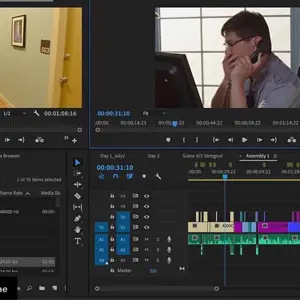
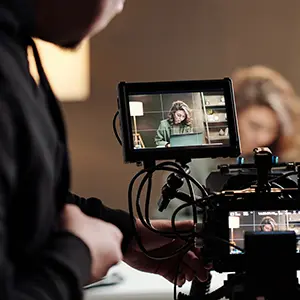


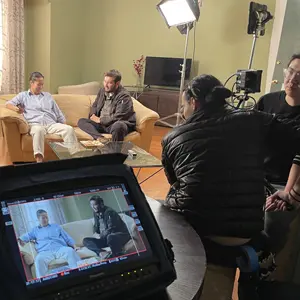

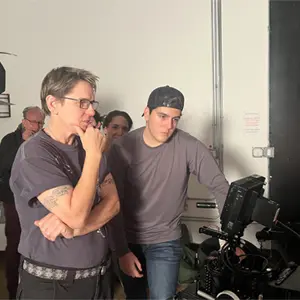
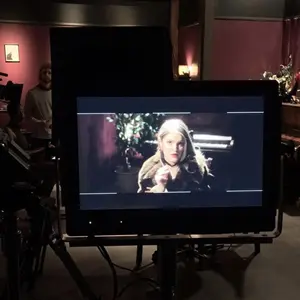

Unit Requirements
| Major Coursework | Units |
|---|---|
| Core | 24 |
| Sophomore Portfolio | 3 |
| Senior Portfolio | 3 |
| Major | 48 |
| Art History | 6 |
| Art by Advisement | 24 |
| Electives | 12 |
| Total | 120 |
Degree Requirements
MOTION PICTURES & TELEVISION CERTIFICATE REQUIREMENTS
- Minimum 2.0 GPA
- Minimum grade of C- in all core courses and major courses

Program Learning Outcomes
Undergraduate students will meet the following student performance criteria:
General Filmmaking Skills
- Collaborate effectively with multi-disciplinary teams
- Create shorts that demonstrate a basic understanding of story structure and character development
- Demonstrate basic understanding of the process of creating a film from beginning to end
Professional Readiness
- Apply knowledge of roles in the film industry to select an area of specialization (Midpoint Review only)
- Effectively showcase work in an industry-standard demo reel and website (Final Review only)
- Demonstrate professional – level achievement through the execution of a variety of projects in area of specialization (Final Review only)
Editing
- Demonstrate proficiency in editing and color correction programs by effectively using them in projects.
- Complete an editorial project through locked cut to include basic sound effects, scratch music underscore, and color correction
Screenwriting
- Create shorts that demonstrate a basic understanding of story structure
- Write shorts where three-dimensional characters are built
- Write shorts that contain realistic dialogue
Cinematography
- Work effectively with various cameras, lenses and accessories
- Design and execute creative lighting schemes
- Effectively manage a scene for coverage
- Apply principles of composition and camera movements to enhance the story
Directing
- Guide a crew in preproduction, production, and postproduction to execute effective choices that serve the story
- Create shorts that demonstrate a basic understanding of story structure and character development
- Elicit engaging and believable performances from actors
Producing
- Acquire or originate and develop material for a project that can be pitched in a professional setting
- Demonstrate basic proficiency in budgeting and scheduling
- Demonstrate familiarity with negotiating film contracts (for actors, crew, locations, equipment, lodging, transportation, and catering)
- Demonstrate understanding of the legal aspects of film production, including copyrights, trademarks, music licensing, and working with minors
Production Design
- Support the look of films based on the director’s vision, including: choosing locations, creating settings, selecting props, and dressing sets
- Communicate design concepts through basic drawing skills and visual presentations
Academy of Art University Learning Outcomes
Graduates of the Academy of Art University will demonstrate the ability to:
- Produce a body of work suitable for seeking professional opportunities in their chosen field of art and design.
- Solve creative problems within their field of art and design, including research and synthesis of technical, aesthetic, and conceptual knowledge.
- Communicate their ideas professionally and connect with their intended audience using visual, oral, and written presentation skillsrelevant to their field.
- Execute technical, aesthetic, and conceptual decisions based on an understanding of art and design principles.
- Use professional terminology to evaluate their work and work in the field.
- Recognize the influence of major cultural and aesthetic trends, both historical and contemporary, on art and design products.
- Learn the professional skills and behaviors necessary to compete in the global marketplace for art and design
- Engage with a variety of communities beyond the classroom through internship opportunities, study abroad programs, athletics, student interest clubs, and participation in collaborative, civic, and pro bono projects.
*Semester plans are subject to change at any time. Semester breakdowns displayed are suggested and additional options are available to help customize your educational experience. Speak to an admissions or student services representative for more information. Please see our catalog for more details at: https://catalog.academyart.edu